18 more of the 176 books nominated for the Fiction Picture Book award for you today! The Cybils committee has described an award-winning Fiction Picture Book as "a celebration of story and illustration, with lasting appeal for kids and/or adults. The best picture books completely excel in art, story, kid-friendliness, and adult appeal. A Cybils-winning picture book adds that special "It Factor." In message, in world-view, in connection, in humor, in reach, a book with "It Factor" rises to a higher level." (Cybils: 2009 Nominations Fiction Picture Books).
I've definitely come across many favorites that I've decided to "shortlist." However, for the fairness of all those who have authored and nominated titles, I'm trying to just share my positive thoughts here to encourage everyone to seek out the books and see how you feel about them! Being a teacher and an avid reader, I can definitely find positive (and ways to use each book educationally) in each of these books! Please take the time to check some of them out for yourself and let me know what you think of them!
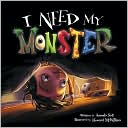 Noll, Amanda.
Noll, Amanda.I Need My Monster.
April 2009.
Flashlight Press.
Little Ethan misses the monster under his bed, who's suddenly decided he needed a fishing vacation. Just none of the other monsters can scare Ethan in quite the same manner Gabe does! The illustrations in this book are incredible - monster lovers will delight at the bright colorful monsters (who in some cases, do appear just too friendly)! This would make a great bedtime story for kids who are not afraid of monster. It might also be a book to consider using for children who are afraid of monsters, as Gabe and the substitute monsters never really harm Ethan in any way - it might just help little ones overcome their fear of monsters, as they learn that Gabe's real job is to help keep Ethan in his bed once bedtime arrives!
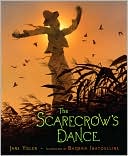 Yolen, Jane.
Yolen, Jane.The Scarecrow's Dance.
August 2009.
Simon & Schuster Books for Young Readers.
Beautiful, eye-catching illustrations will certainly attract readers to this wonderful new book by Yolen. The story is easy to imagine actually happen and is very well written in poetic verses. Not only is the story itself incredible (one that I have decided to use this week at my reading program), it also teaches quite a valuable lesson to little readers - sometimes you are called upon to do certain things because you are the best one for the job. Your thoughts may lead you astray, but ultimately, you'll find your place in the world. However, in order to get there, you may have to face a life that you're not whole-heartedly content with in the meantime (I keep trying to remind myself of this during this difficult time of caring for my grandmother with dementia)!
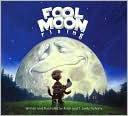 Fluharty, Kristi and T. Lively.
Fluharty, Kristi and T. Lively.Fool Moon Rising.
September 2009.
Crossway.
The moon, who's always boasting and bragging, finally gets a taste of his own medicine and learns he isn't the center of the universe, as he's previously thought. Readers of this book would likely need to have prior knowledge about the solar system (to recognize that the sun is the center of the universe - not the moon) and key vocabulary, such as pride and humility would have to be addressed in order to be sure that readers are able to learn the message. The message I took away is that it's important to maintain a sense of humility. If you're too full of yourself, you'll face the dangers that pride can present. I think this would make a nice fit in a school's character education curriculum!
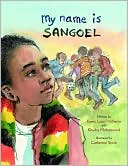 Williams, Karen Lynn and Khandra Mohammed.
Williams, Karen Lynn and Khandra Mohammed.My Name is Sangoel.
June 2009.
Eerdmans Books for Young Readers.
The slightly washed out water-color illustrations allow readers to focus on the feeling of the indivuals who are the emphasis of this book, making sure that the focus stays where it belongs! Sangoel (sun*goal) is a Sudanese refugee beginning a new life in America. He's struggling as he copes with fitting in in his new home, as his foreign name, for all intents and purposes is "lost" in American society, as no one can remember, let alone pronounce it. The book depicts perfectly the emotions of refugees in America and allows native American children to learn an important message about foreigners in their country. For refugees - It's important to accept your name and carry it proudly with you, as it's a part of your heritage that should never be forgotten. For American children - Accept refugess in a welcoming manner and help them feel at home in their new county - they're already struggling with the changes that come with being a refugee.
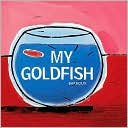 Barroux.
Barroux.My Goldfish.
March 2009.
Eerdmans Books for Young Readers.
This book, intended for the youngest readers (3-7), is more than appropriate in it's simple text that is quickly read. Adding the text to the acrylic paint and pencil illustrations, little eyes will certainly keep wondering what the "strongest golfish in the world" will be up against next. Children are sure to love the adventure. My only concern with this book is whether or not little readers will be able to draw the line between realistic and unrealistic when it comes time to caring for their own goldfish!
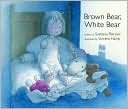 Petrovic, Svetlana.
Petrovic, Svetlana.Brown Bear, White Bear.
September 2009.
Eerdmans Books for Young Readers.
Alice, a little girl who has received two bears (one brown, one white) for her birthday gets sick of their constant arguing for her attention! She decides to put them both away until they're ready to share her friendship - and eventually the two learn to work together, not only to overcome their own fears, but also to share Alice. The almost-drab background illustrations work perfectly to bring forth the three main characters of the story, allowing readers not become lost with the little, unimportant details, ensuring that the message is clear for children. Children should quickly pick up on the idea that despite differences, a group of friends should put aside jealousy and have fun together. Two of three friends in a group constantly arguing has the capability of ruining a friendship for all three. I think children will really be able to connect with this idea of competing for a friend's attention, as I seen this happening in classrooms on a near daily basis!
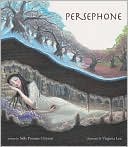 Clayton, Sally Pomme.
Clayton, Sally Pomme.Persephone.
March 2009.
Eerdmans Books for Young Readers.
Persephone is an Ancient Greek myth retelling which describes the origin of the seasons. While the artwork has an almost icy quality to it, it didn't draw my attention the way I had hoped. However, I think many children will find this book enjoyable, especially if they have inquisitive minds and are constantly questioning how things came to be. There is no strong moral, but rather one pourquoi tale that depicts one version of how seasons came to be. If you paired this book with How Robin Saved Spring, I think this might make for a really neat writing assignment in an upper-level elementary classroom focusing on pourquoi tales. Ask children to come up with their own pourquoi tale about the seasons come about. You'd likely have some interesting tales show up!
 Anderson, Laurie Halse.
Anderson, Laurie Halse.The Hair of Zoe Fleefenbacher Goes to School.
June 2009.
Simon & Schuster Books for Young Readers.
This is a very funny, cleverly written story that shows all of the things that Zoe's wild hair is good for! The illustrations perfectly depict the mood of Zoe, her classmates and her teachers throughout the story and will certainly keep children on their toes and laughing! A simple, yet important message is relayed in this book - make the most of what you and others have. By learning to work together to solve problems, you're making the world a better place in which to live!
 Dewdney, Anna.
Dewdney, Anna.Llama Llama Misses Mama.
March 2009.
Viking.
The artwork, which appears as though it's illustrated on canvas, will certainly be familiar to those who have read other books in the Llama Llama series. The story itself is appropriate for young children who will be separated from their parents for the first time due to attending school (preschool or kindergarten) and the use of a familiar character will likely make the idea of a transition just a bit easier for children, as they've probably seen that Llama can accomplish anything! Llama Llama Misses Mama does a wonderful job or showing children that it's okay to go off to school, play and make new friends and that at the end of the day, parents/guardians (especially those concerned enough to share related literature with their children to help prepare for the transition) will always come back for their little one!
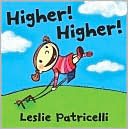 Patricelli, Leslie.
Patricelli, Leslie.Higher! Higher!
March 2009.
Candlewick Press.
This book, while extremely simple and realistic could be used in so many ways, to show children (and adults) an important, although subtle message! It would be a wonderful gift for children entering school, for children who are graduating from preschool or kindergarten, even for those graduating from high school! It would also be a great baby gift for new parents, who desire nothing more for their children than their ability to do great things in life by constantly desiring to go "Higher! Higher!" I think young children will easily connect to this story, as the connection to an object as simple as a swing, has them reaching higher and higher in life to accomplish their goals!
 Lowry, Lois.
Lowry, Lois.Crow Call.
October 2009.
Scholastic Press.
Wow! I've always found stories told about personal histories to be some of the best there are out there! This one didn't disappoint my expectations! The illustrations made me feel as though I was right there beside Lowry, experiencing the crisp Autumn day beside her and her father. What's nice about this book is that many, many families will be able relate to it. The message here, while someone obscure and unlikely for children to immediately pick up on, is no less important - find a way to bond with those that you love so you can understand who they really are. While Lois didn't actually believe in crow hunting, the time she spent calling crows for her father allowed her a connection that would last a lifetime!
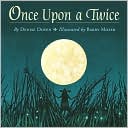 Doyen, Denise.
Doyen, Denise.Once Upon a Twice.
August 2009.
Random House.
Pay attention to what you're forewarned about, for those doing the telling, often have first-hand experience that could "save" you! That's the important message to be learned from this book. The dark, vividly portrayed mouse community, presented in this story through rhyming and nonsensical words, allows readers to actually feel as though they've stepped into a full-moon night and joined these mice in their adventures. My only concern with this otherwise wonderful book is that young readers will spend too much time trying to figure out what the nonsensical words mean in this story and will lose the true meaning that's very important!
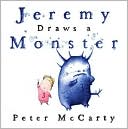 McCarty, Peter.
McCarty, Peter.Jeremy Draws a Monster.
September 2009.
Henry Holt and Company.
This book is very cute and reminds me very much of Allan Ahlberg's The Pencil (my review of that can be found here), in which the more that is drawn, the more problem there is to get rid of! Jeremy, all alone in his room decides to draw a monster. We all know that monsters tend to mean trouble, but Jeremy isn't quite prepared for the demands of his monster and must find a way to get rid of him - which ultimately means more drawing! While there were parts of the book that truly confused me, I think kids will probably enjoy the story, especially if you combine it's reading with that of The Pencil and Harold and the Purple Crayon!
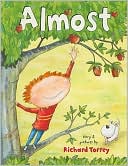 Torrey, Richard.
Torrey, Richard.Almost.
May 2009.
HarperCollins Publishers.
Adults and children alike will appreciate and enjoy a book that shows kids being typical kids! Jack is your typical kid... he's almost six-years old. He can almost hit a home run. He can even almost make his own breakfast! However, sometimes almost isn't enough! The very colorful illustrations are eye-catching and will only add to the wonderful story being told here. Almost all young children can't wait to grow up and because of that, they'll really connect to this book... however, growing up takes some time, so the message given here is more than appropriate for your little ones! It's okay to be young - enjoy being little, soon enough you'll be all grown-up!
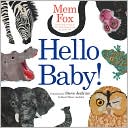 Fox, Mem.
Fox, Mem.Hello, Baby!
May 2009.
Beach Lane Books.
A very sweet story, coupled with Steve Jenkins instanly recognizable, collage (torn-paper) style illustrations make this book an all around winner... at least for younger children! Parents will love the tender show of affection to children in general, as we immediately notice the ways in which a mother (or parent) treasures each and every one of their children because they are all unique and special. The final page of the story will allow children to see the special attention they all deserve and seek. This would be a perfect gift for a baby shower or young child's birthday.
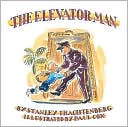 Trachtenberg, Stanley.
Trachtenberg, Stanley.The Elevator Man.
July 2009.
Eerdmans Books for Young Readers.
Mondernization is at work in this book, as an old-fashioned elevator (run by an elevator man) is eventually replaced by an automated version that is run by the individual riders. The message, that was blatantly stated on the jacket cover, was somewhat harder to grasp in the story - dreams can come true. I think the entire book will be somewhat difficult for children to understand, as I don't believe many of them even know that elevators used to be run by "elevator men."
 Skyberg, Andrea.
Skyberg, Andrea.Snickeyfritz.
May 2009.
Wooden Press.
Oh, I love this one! In a unique attempt to connect generations, a grandfather sends his granddaughters on a treasure hunt, inspired by combing language of his youth to the language of their own youth, forcing the girls to use their imagination - which is the ultimate treasure to be found when solving the hunt! The photographs of life-size dolls combined with the artistic environments make this book very eye-catching and girls, especially, will fall in love. The message to be found here is that with an imagination you can go anywhere you wish in life! This is definitely a book that I am glad to add to my collection and will certainly find some way to use in a classroom!
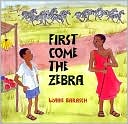 Barasch, Lynne.
Barasch, Lynne.First Come the Zebra.
August 2009.
Lee & Low Books Inc.
This book is representative of Kenya, Africa in so many ways - a truly wonderful way to introduce children to an entirely different lifestyle! The watercolor illustrations allow readers to visualize the sunrise/sunset of Kenya. Two feuding groups, along with a series of animals that migrate to make the best use of grassland depict the need for cooperation among people for not only basic survival but also the ability to thrive. If people work together cooperatively, great things can happen! Through the use of the zebra, wildebeest and gazelle, children should be able to easily find the message and take the most from it!
If you're interested in finding out more information about any of the books reviewed or if you'd like to purchase the books, click the cover image for a link to Amazon.com.








2 comments:
I had never considered using "Higher! Higher!" as a gift to encourage graduates to reach for their dreams. Nice idea. I do know that my 1-1/2 year old simply adores the book, which is why I recommended it. Wanted to give a few options for those very, very young readers.
Wow - great post. Cool to see what your thoughts are on these Cybils-nominated titles.
Post a Comment